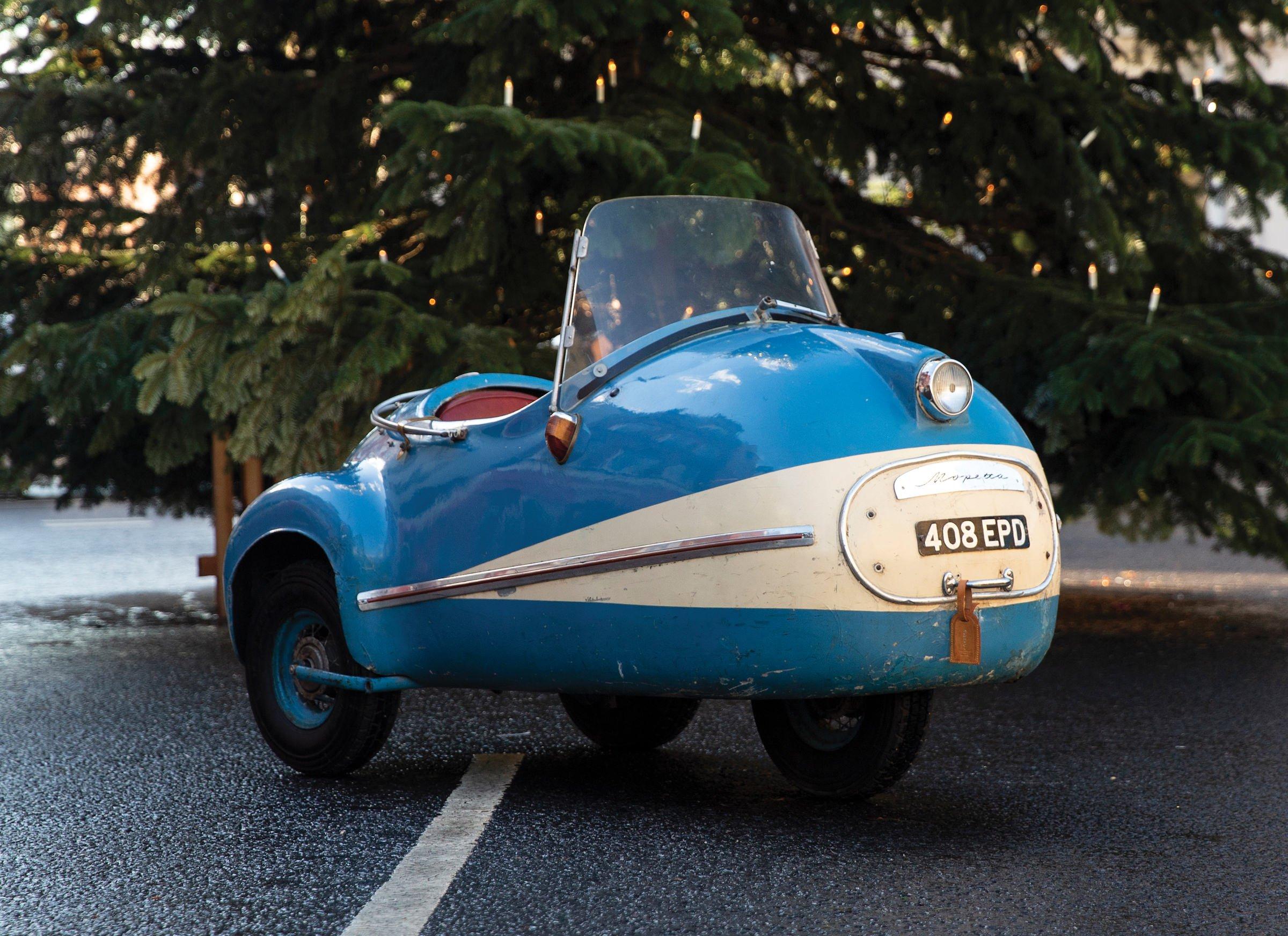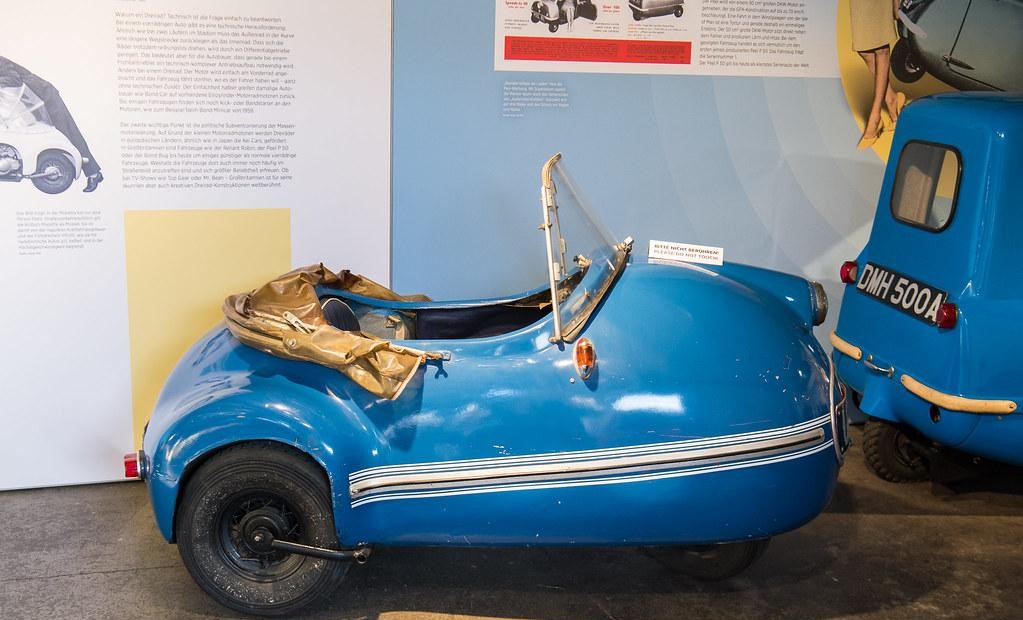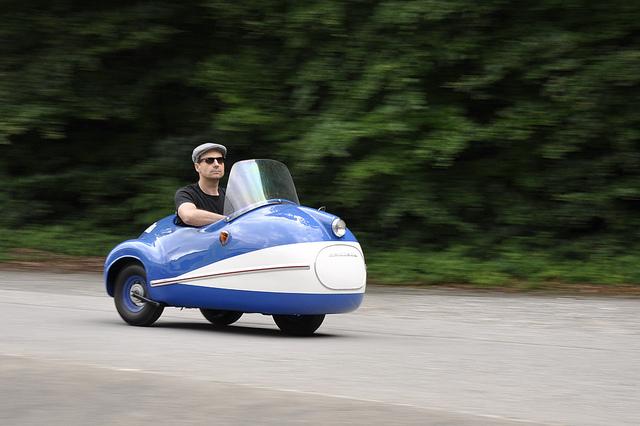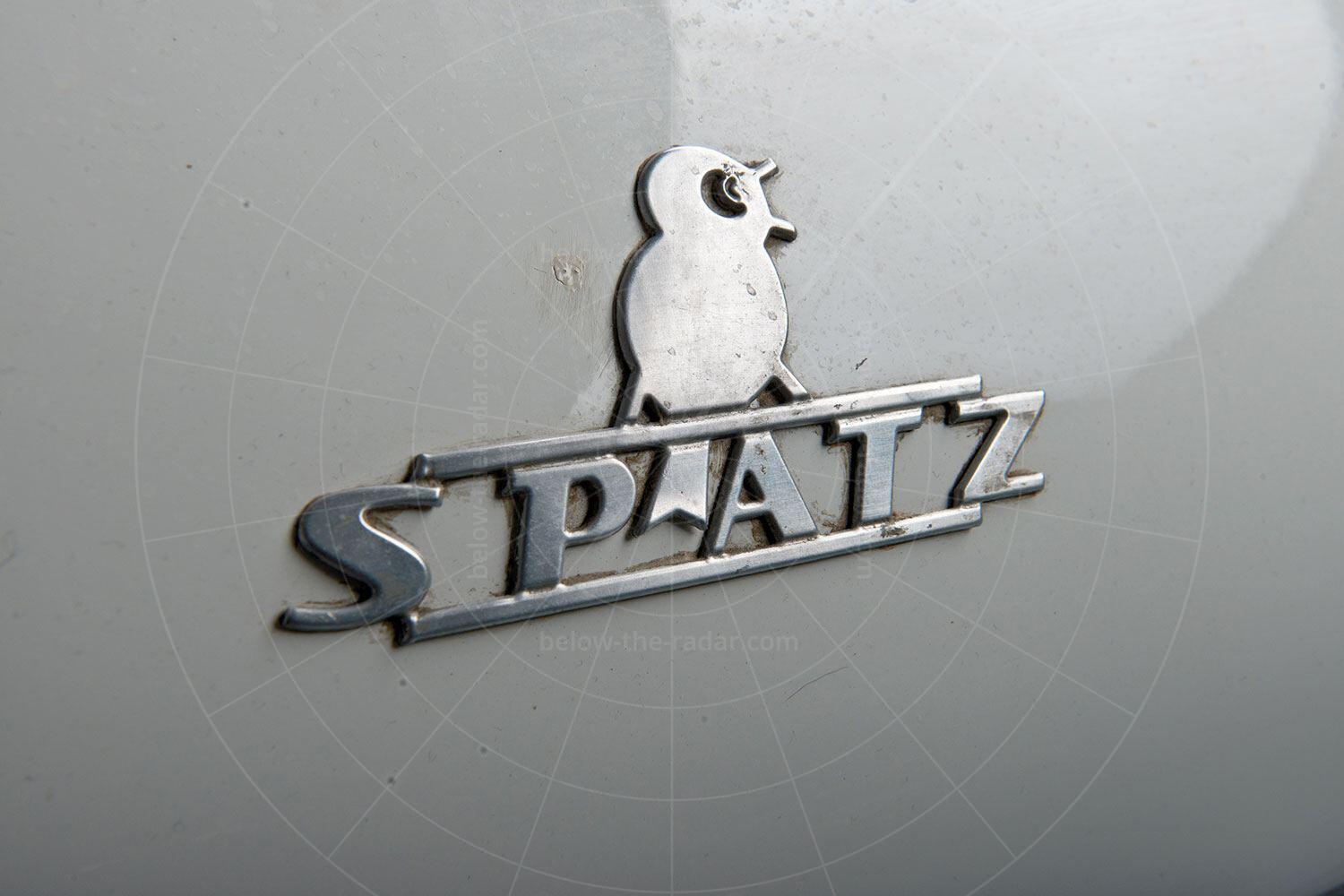1957 Spatz Mopetta
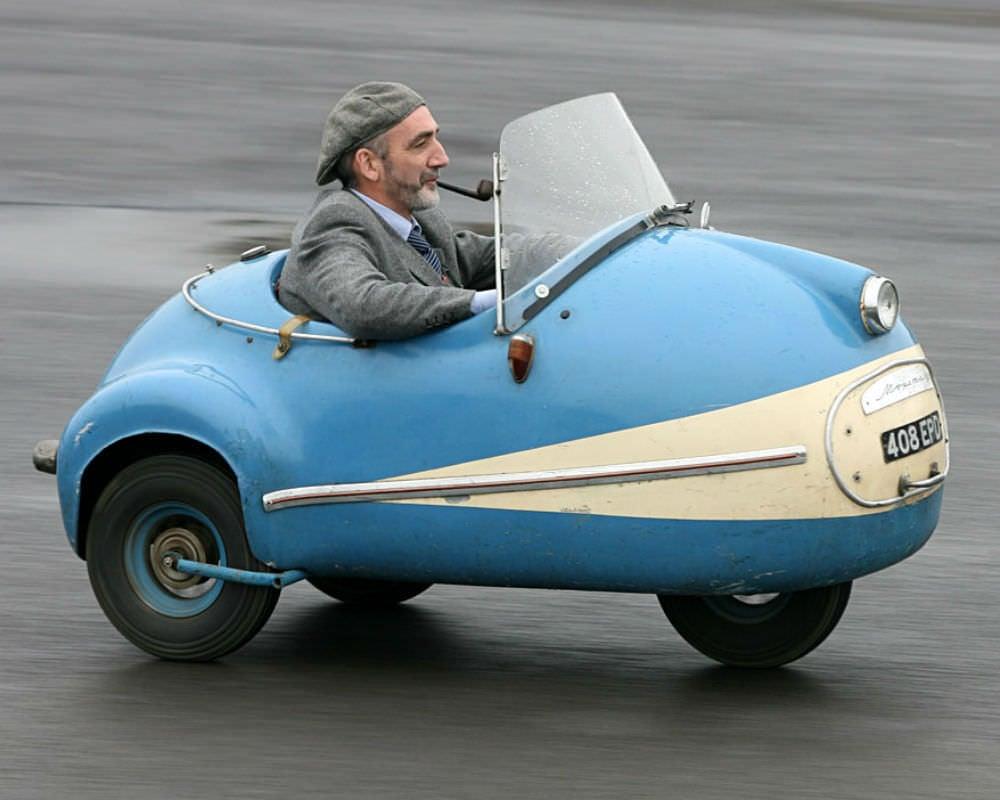
The descriptions of the Classic Cars in the Directory were partly generated or supplemented with the help of artificial intelligence (AI). The content may occasionally not always be entirely accurate or factually correct despite careful checking.
The Brütsch Mopetta 1957 is a revolutionary microcar that was designed and manufactured in Germany in the 1950s. It was one of the smallest cars ever created and had a unique design that was ahead of its time. The Mopetta is a three-wheeled vehicle with a single rear wheel and two front wheels that are close together. It was designed to be a small, efficient, and practical means of transportation for urban areas, and it accomplished that goal quite successfully.
The Mopetta is powered by a single-cylinder two-stroke engine with a displacement of just 49cc. This engine is capable of producing 2.2 horsepower at 4500 RPM, which is enough to propel the car to a top speed of 28 miles per hour. The engine is mated to a three-speed manual transmission and a chain drive that turns the single rear wheel. The Mopetta has a total weight of just 160 kg, which makes it incredibly efficient and nimble.
The body of the Mopetta is made from fiberglass, which was a new material at the time. The body is incredibly lightweight and provides excellent protection from the elements. The Mopetta has a single door on the right-hand side of the vehicle, which opens upward and is hinged at the top. There is a large windshield that provides excellent visibility and a retractable cloth top that can be used to protect the driver and passenger from the sun or rain.
The suspension of the Mopetta is provided by a single coil spring that is mounted to the single rear wheel. The front wheels are mounted on independent suspension with coil springs and shock absorbers. The Mopetta has drum brakes on all three wheels, which provide adequate stopping power for a car of its size.
The interior of the Mopetta is very minimalistic, with only a single bench seat and a dashboard that houses a speedometer and a fuel gauge. There are no other amenities, such as a radio or air conditioning. The Mopetta is designed to be a basic means of transportation and nothing more.
In conclusion, the Brütsch Mopetta 1957 is an incredibly unique and innovative vehicle that was ahead of its time. Its lightweight construction, efficient engine, and minimalistic design make it a truly remarkable microcar. Though it was only produced for a few years, it remains a popular collector's item and a testament to the ingenuity and creativity of its designers.
Milestones
- Brütsch Mopetta was first introduced in 1956 as a prototype. - The first production model of Brütsch Mopetta was produced in 1957. - The car had an egg-shaped body and was a three-wheeler. - It was designed to be an affordable and easy-to-maintain microcar for city use. - The car had a top speed of around 30 mph and could be driven without a driving license in some countries. - The original model was powered by a single-cylinder, 50cc engine, but later models had a 125cc engine. - Brütsch Mopetta had a unique steering mechanism where the driver had to lean to steer the car. - The car had two tandem seats and a removable cover instead of doors. - It was only in production for two years, with around 14,000 models made before the company went bankrupt in 1958.Technical
- The Brütsch Mopetta was a microcar manufactured in Germany in 1957. - It was designed by Egon Brütsch and produced by his company, Brütsch Fahrzeugbau. - The Mopetta had a single wheel in the front and two wheels in the back, which made it a reverse trike or a “tadpole” configuration. - It was powered by a 50cc two-stroke engine, which generated 2.2 horsepower. - The engine was mated to a continuously variable transmission, which allowed for smooth and effortless acceleration. - The Mopetta had a top speed of 30 miles per hour and a range of roughly 60 miles on a single tank of gas. - The car had a fiberglass body, which made it lightweight and corrosion-resistant. - The Mopetta featured a unique steering system that used a tiller rather than a traditional steering wheel. - The car could accommodate two passengers in a tandem seating arrangement. - Production of the Mopetta was limited to just a few hundred units, making it a rare and sought-after collector’s item today.